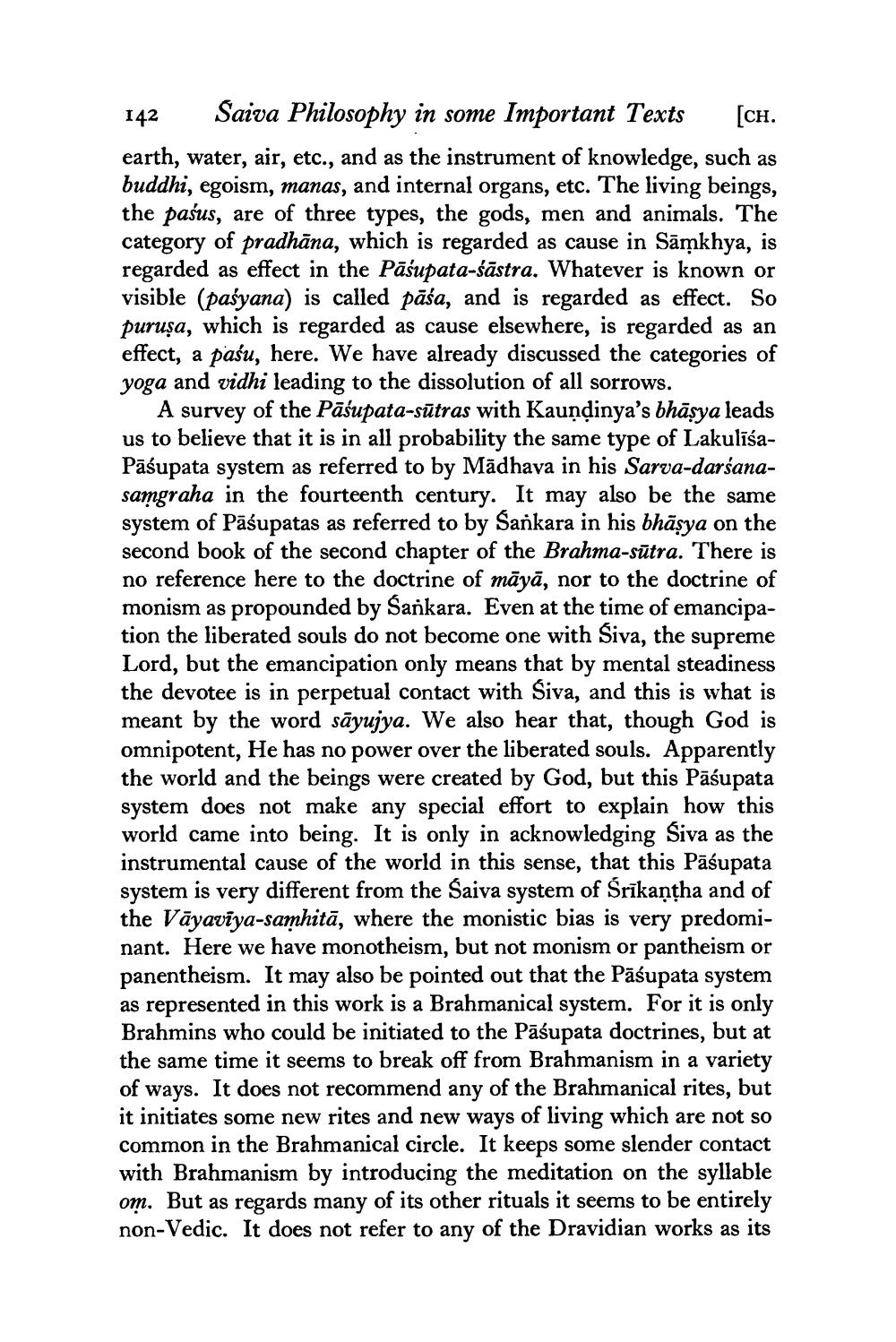________________
142 Saiva Philosophy in some Important Texts [CH. earth, water, air, etc., and as the instrument of knowledge, such as buddhi, egoism, manas, and internal organs, etc. The living beings, the pašus, are of three types, the gods, men and animals. The category of pradhāna, which is regarded as cause in Sāmkhya, is regarded as effect in the Pāśupata-śāstra. Whatever is known or visible (paśyana) is called pāśa, and is regarded as effect. So puruşa, which is regarded as cause elsewhere, is regarded as an effect, a paśu, here. We have already discussed the categories of yoga and vidhi leading to the dissolution of all sorrows.
A survey of the Pāśupata-sūtras with Kaundinya's bhāsya leads us to believe that it is in all probability the same type of LakulīšaPāśupata system as referred to by Mādhava in his Sarva-darśanasamgraha in the fourteenth century. It may also be the same system of Pāśupatas as referred to by Sankara in his bhāsya on the second book of the second chapter of the Brahma-sūtra. There is no reference here to the doctrine of māyā, nor to the doctrine of monism as propounded by Sankara. Even at the time of emancipation the liberated souls do not become one with Siva, the supreme Lord, but the emancipation only means that by mental steadiness the devotee is in perpetual contact with Siva, and this is what is meant by the word sāyujya. We also hear that, though God is omnipotent, He has no power over the liberated souls. Apparently the world and the beings were created by God, but this Pāśupata system does not make any special effort to explain how this world came into being. It is only in acknowledging Siva as the instrumental cause of the world in this sense, that this Pāśupata system is very different from the Saiva system of Śrīkantha and of the Vāyaviya-samhitā, where the monistic bias is very predominant. Here we have monotheism, but not monism or pantheism or panentheism. It may also be pointed out that the Pāśupata system as represented in this work is a Brahmanical system. For it is only Brahmins who could be initiated to the Pāśupata doctrines, but at the same time it seems to break off from Brahmanism in a variety of ways. It does not recommend any of the Brahmanical rites, but it initiates some new rites and new ways of living which are not so common in the Brahmanical circle. It keeps some slender contact with Brahmanism by introducing the meditation on the syllable om. But as regards many of its other rituals it seems to be entirely non-Vedic. It does not refer to any of the Dravidian works as its




